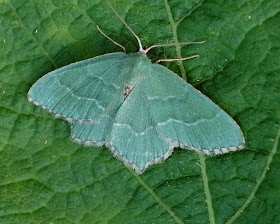All lepidopterists look forward to the coming of June and the instant rise in variety of moths to trap. That is, apart from this year, when northerly strong winds and downpours, coupled with low temperatures (11C during the day, 6C at night) meant the last few days have been dire.
The only highlight was the influx of swarms of
Plutella xylostella (Diamond back moth.) This migrant is normally taken in small numbers later in the year, but a rise from 3 on the 30th May, 57 on the 31st, 19 on 1st June and last night just 8 certainly boosted the total moth numbers for the year, if not the species number.
Other new moths for the year have been:
Crambus lathionellus (29th) in the garden, May highflier (Pig's Green 30th) mottled rustic (garden 30th)
Ephestia unicolorella (garden 31st), heart and dart (1st June to the garden trap and last night
Callisto denticulella.
This takes the total species for the parish to 115 species (78 macros and 37 micros and a running total of 744 moths in all.
 |
| Callisto denticulella |
 |
| Plutella xylostella |
 |
| Another P. xylostella from the 57 recorded on the 31st May |



































